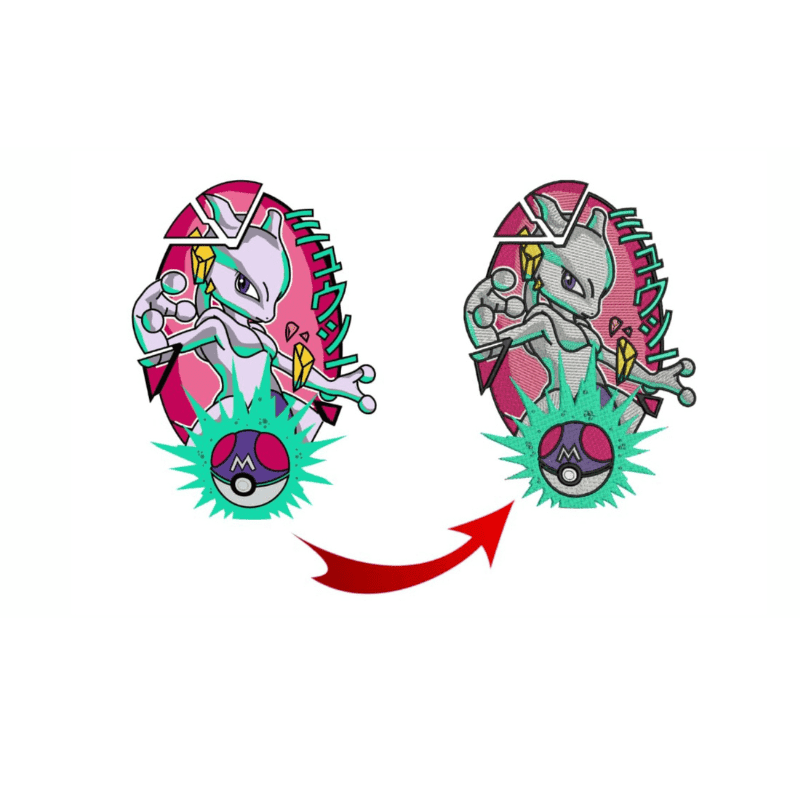Premium Digitizing for Embroidery: Expert Craftsmanship
Premium Digitizing for Embroidery: Expert Craftsmanship
Blog Article
Simplifying the Art of Embroidery Digitizing: Step-by-Step Guide
As innovation proceeds to advance, the digitization procedure has actually come to be a lot more accessible, enabling fanatics to bring their detailed styles to life with ease. In this guide, we will untangle the intricacies of embroidery digitizing, breaking down each step carefully to simplify the process and encourage both newbies and seasoned embroiderers alike.
Comprehending Embroidery Digitizing Software Program
Needlework digitizing software application acts as a vital tool for changing elaborate designs into electronic styles compatible with embroidery machines, assisting in exact stitching and personalization. This customized software enables customers to import numerous photo data styles, such as JPG or PNG, and convert them right into needlework machine-readable formats like DST, EXP, or PES - Digitizing for Embroidery. By using functions like stitch modifying, rug choices, and thread color selection, digitizing software program enables individuals to manage every element of the layout process
Furthermore, progressed embroidery digitizing software supplies devices for developing complex layouts, adjusting stitch thickness, and incorporating intricate details. Users can likewise preview the style before sewing it out, guaranteeing accuracy and minimizing mistakes. Additionally, several software program programs give automatic attributes that aid enhance the digitizing process, conserving time and initiative.
Recognizing the capabilities of needlework digitizing software is crucial for accomplishing top quality results in embroidery jobs. By mastering this tool, needlework fanatics and professionals can release their imagination and bring intricate designs to life with accuracy and effectiveness.

Selecting the Right Layout File
After acquainting on your own with the abilities of needlework digitizing software program, the following important action in the procedure is picking the right layout apply for your job. Digitizing for Embroidery. When picking a style documents for needlework digitizing, it's crucial to take into consideration the complexity of the layout, the dimension of the end product, and the sort of material you will certainly be functioning with
For intricate layouts with fine information, a high-resolution photo or vector data is suggested to ensure that the needlework maker can accurately duplicate the style. Furthermore, the size of the end product plays a considerable duty in choosing the ideal style file. Larger styles may require higher resolution files to preserve clearness and sharpness.
Moreover, the kind of textile you will be embroidering on influences the option of layout file. Different fabrics might need changes in the style documents to guarantee that the stitches are effectively lined up and the layout appears as planned. By carefully selecting the ideal style file based upon these aspects, you can establish on your own up for a successful embroidery digitizing process.
Digitizing Tools and Techniques
Using specialized software and accuracy methods, digitizing tools are necessary in transforming detailed styles right into embroidery-ready data. Embroidery digitizing software program, such as Wilcom, Hatch, or Embrilliance, provides the necessary system to convert art work into stitch information. These programs supply features like stitch modifying, rug alternatives, and lettering tools to make sure the layout equates effortlessly onto textile.
One of the essential strategies in digitizing is producing a clear path for the needlework device to follow. This involves digitizing each aspect of the layout with precision, establishing stitch types, thickness, and instructions. By making use like it of tools like digitizing tablets or software-specific plugins, embroiderers can attain a high degree of precision in their digitized styles.
In addition, understanding the art of padding sewing is essential for generating top quality needlework. Underlay stitching stabilizes the material and produces a structure for the layout, making sure that the end product is both visually enticing and resilient. By recognizing these digitizing devices and strategies, embroiderers can raise their craft and bring complex styles to life with precision and effectiveness.
Customizing Stitch Types and Instructions
Having actually established a foundation in digitizing devices and methods, an essential element ahead of time needlework workmanship depends on tailoring stitch types and directions with precision and purpose. The selection of stitch types can dramatically influence the general look and texture of the embroidered style. Satin stitches, understood for their smooth and shiny coating, work well for creating you could try these out boundaries and text. On the other hand, fill stitches are optimal for covering larger areas successfully. By strategically combining these stitch kinds, embroiderers can attain deepness and measurement in their layouts.
Additionally, the direction of stitches plays an essential duty in enhancing the aesthetic charm of the last needlework. By trying out with different stitch angles and patterns, embroiderers can bring their styles to life with amazing information and complexity.
Screening and Refining Your Digitized Layout
To guarantee the accuracy and high quality of your digitized style, comprehensive testing and improvement are necessary action in the needlework digitizing procedure. When you have completed the digitization of your design, it is essential to test it prior to proceeding with the actual needlework. Checking allows you to recognize any prospective issues such as string breaks, stitch density issues, or design distortions that might impact the outcome.

After testing, it is essential to fine-tune your moved here digitized layout based upon the feedback from the test sew-out. This might entail tweaking stitch settings, adjusting thickness, or making adjustments to the overall layout to accomplish the preferred outcome. By repeating through screening and refinement, you can fine-tune your digitized style to excellence prior to progressing with the actual needlework procedure.
Verdict
Finally, grasping the art of embroidery digitizing needs a comprehensive understanding of the software, selecting the right style data, making use of digitizing tools and strategies, customizing stitch kinds and instructions, and testing and fine-tuning the digitized style. By following these actions, embroiderers can simplify the digitizing process and produce high-grade stitched styles with accuracy and performance.
Report this page